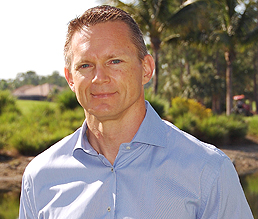International Buyers
October 26, 2015 Posted by Matt
 Florida remains the most popular state for international buyers of U.S. residential real estate. According to a new study by the National Association of Realtors (NAR), over the past year, foreigners purchased 44,000 existing residential properties in Florida for the 12-month period ending in June which is down by 8,300 or 16 percent from the previous year. Rising home prices and less favorable exchange rates are two key factors in the reduction of the number of sales to international buyers over the past year.
Florida remains the most popular state for international buyers of U.S. residential real estate. According to a new study by the National Association of Realtors (NAR), over the past year, foreigners purchased 44,000 existing residential properties in Florida for the 12-month period ending in June which is down by 8,300 or 16 percent from the previous year. Rising home prices and less favorable exchange rates are two key factors in the reduction of the number of sales to international buyers over the past year.
The latest sales accounted for 12 percent of Florida’s total residential market, down from 15 percent last year.
The dollar volume of international sales totaled $23.7 billion, 24 percent of the state’s total residential sales and higher than the prior year’s 19 percent.
“Increases in home prices across the U.S. and in Florida, changes in foreign exchange rates and adverse economic conditions in some countries appear to have been the major factors that dampened the demand for existing homes by foreign buyers,” said report author Lawrence Yun, chief economist at the NAR.
Home prices rose 6 percent in Florida during the study period.
“The weakening of most currencies against the U.S. dollar — the Canadian dollar, the Brazilian real and the euro — further made Florida prices more expensive in terms of the local currency,” Yun said. “In this year’s survey, respondents reported that the primary reason cited for not making a sale was ‘cost of property’ (18 percent in 2015, 11 percent in 2014). Previously, ‘could not find property’ was the major reason.
“Also, a higher share of respondents cited that the exchange rate movement had an impact on foreign purchases.”
Miami led the state with the most international buyers purchasing homes at 36 percent, with Fort Lauderdale second, at 14 percent.
“Foreign buyers typically purchased properties that were more expensive than those purchased by the typical Florida domestic buyer,” Yun said. “The average price of a property purchased by the foreign buyer was $538,600, compared to the average price of $258,200 in Florida’s residential market.”
Buyers from Western Europe, except the U.K., and from China bought the more expensive properties, while buyers from the U.K. and Canada purchased less expensive properties. That tracked with the survey’s findings that the majority of these buyers purchased properties in Miami-Miami Beach area, where home prices are higher.
Nearly three-fourths of foreign buyers paid cash, with Canadians the most likely to buy without financing.
Two-thirds of Florida’s foreign buyers said they bought homes to use as vacation or rental properties, or both. Another 20 percent purchased as a primary or retirement residence.
Nearly half of the foreign sales were condos, apartments or townhomes, which are more typical purchases for part-time residents.
“The international market for the sale of existing residential homes to non-resident foreigners remains an important part of the total Florida real estate market,” Yun concluded. “Although the role of foreign buyers has declined compared to the years in the wake of the Great Recession, foreign buyers continue to be a significant source of business in Florida, especially when compared against the national performance.”






